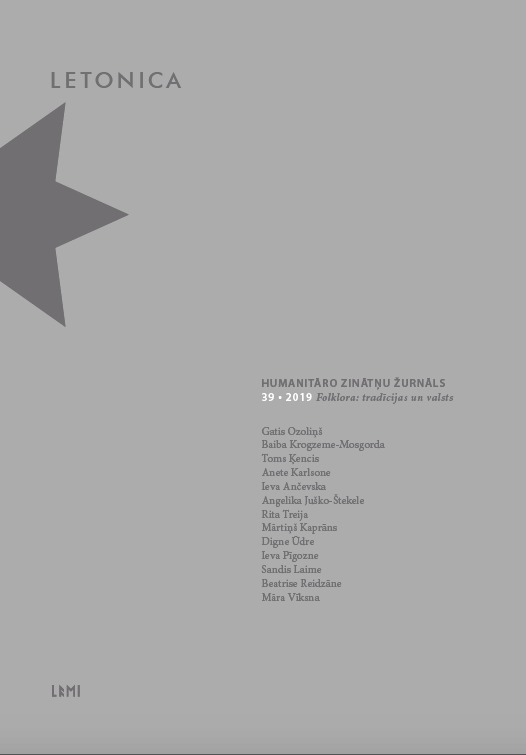Priekšauta valkāšanas tradīcijai pa pēdām
Tracing the Tradition of Wearing Apron
Author(s): Ieva Pīgozne-BrinkmaneSubject(s): Cultural history, Customs / Folklore, Local History / Microhistory, Modern Age, History of Art
Published by: Latvijas Universitātes Literatūras, folkloras un mākslas institūts
Keywords: Apron; traditional clothing; meaning; festive dress; work attire; wearing;
Summary/Abstract: This paper is focused on the meaning and wearing practises of apron in Latvian traditional dress that has not been closely studied before. In the territory of Latvia the earliest evidence of an apron-like piece of jewellery consisting of amber pendants dates back to the Stone Age. It is followed by two Liv aprons that have been decorated with bronze spirals in the Late Iron Age. In the 16th–19th centuries there are iconographic and written sources that contain information on wearing aprons in various places in Latvia. Most of these sources confirm that the aprons used to be part of the festive and work attire alike. Latvian folk songs and folk beliefs also contain information on aprons. Folklore sources reveal the symbolic meaning of the apron that involves fertility, protection and a woman’s relationship with a man. So far it is not clear whether wearing an apron had to do with the marital status of women, since the information from various sources differs. The origins of an apron are very old in Europe, and its meaning has to do with fertility. The ancient symbolism and wearing practice can still be observed in the traditional dress of the 19th century. Therefore apron is not only worn at work but also at weddings and other festive occasions in many places in Europe. In Latvia, Russia, Ukraine, and Bulgaria the apron was used to cover the vertical opening of the wrap-around skirt that symbolically opened the way to the woman’s genitals. When the wrap-around skirt was no longer worn, the need for the apron also slowly disappeared. The sacral meaning of the apron was gradually lost and the profanized function of protecting one’s dress from getting dirty prevailed in the 20th century. When wearing a folk costume today, it has to be considered that many of the popular folk costume sets were created in the interwar period when the dominant view was that the apron did not belong to Latvian dress. These sets of folk costume conflict with the historic sources and therefore should be revised. This article reflects the results of Ieva Pigozne’s postdoctoral research project “Development of Folk Dress in Latgale in the 19th Century”.
Journal: Letonica
- Issue Year: 2019
- Issue No: 39
- Page Range: 177-193
- Page Count: 21
- Language: Latvian

